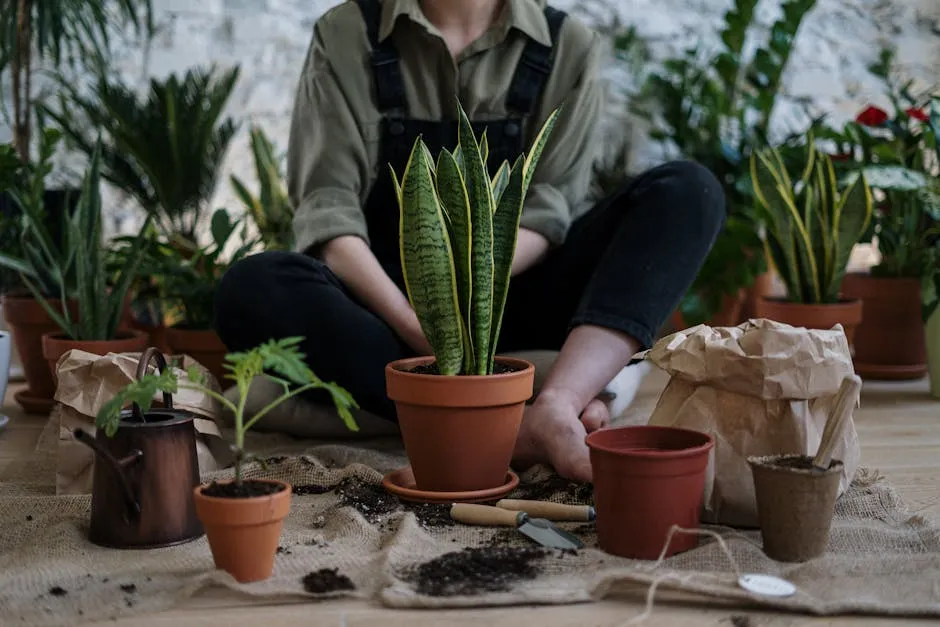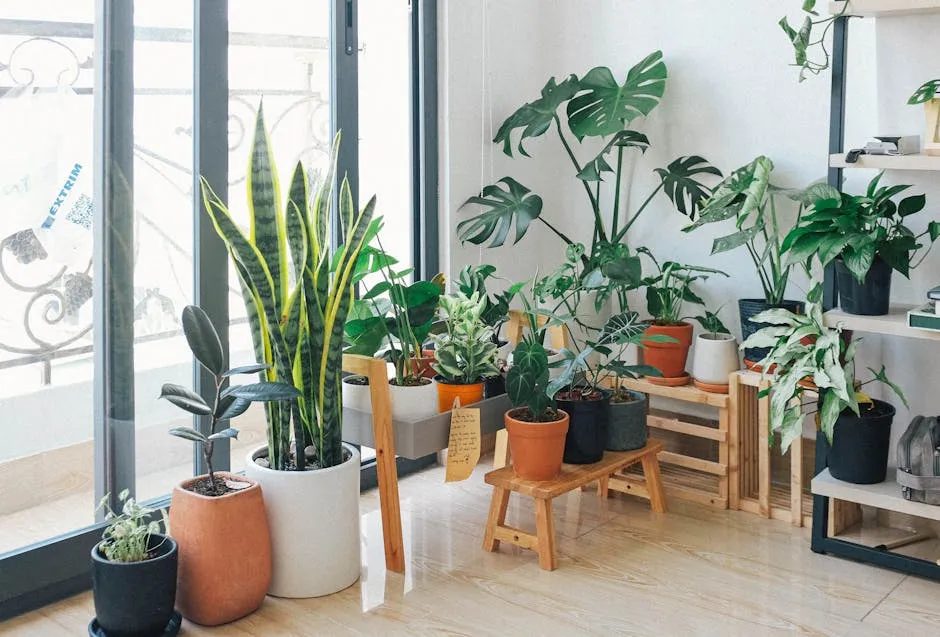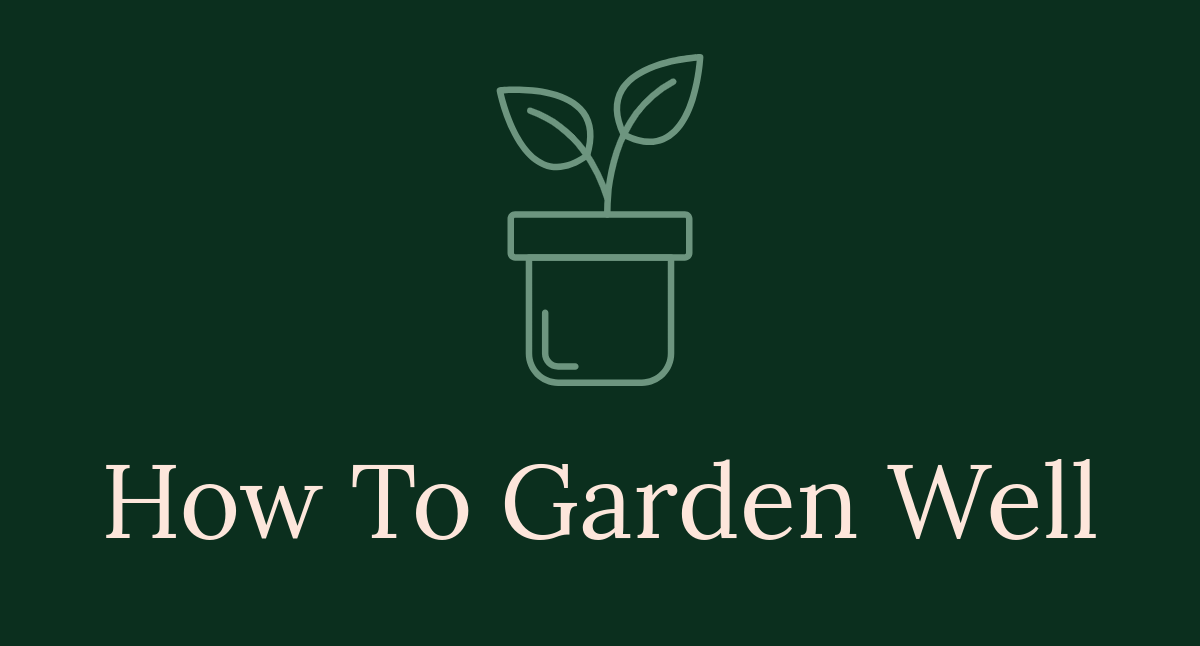

Best Herbs to Grow in a Kitchen Windowsill: A Complete Guide
Introduction
Growing herbs on your kitchen windowsill is a delightful way to bring fresh flavors to your meals. Imagine reaching for basil while whipping up a pasta dish or snipping chives to sprinkle over your baked potatoes. With just a little sunlight and care, you can cultivate a mini herb garden right in your kitchen!
The benefits of having fresh herbs at hand are plentiful. For starters, they can elevate the taste of your dishes, transforming ordinary meals into culinary masterpieces. Fresh herbs not only enhance flavors but also add a pop of greenery, making your kitchen more inviting and vibrant. Plus, the aroma of growing herbs can uplift your cooking space, creating a cozy atmosphere.
Many herbs thrive indoors, making them ideal candidates for windowsill gardening. Varieties like basil, parsley, chives, and mint are not only easy to grow but also perfect for adding zest to your favorite recipes. So, whether you’re a seasoned chef or a kitchen novice, growing herbs on your windowsill can spice up your culinary adventures and beautify your home in the process!
To kickstart your indoor herb garden, consider getting an Herb Garden Starter Kit. It has everything you need to get started, from seeds to pots, making your gardening experience smooth and fun!

Benefits of Growing Herbs Indoors
Convenience: There’s nothing quite like having fresh herbs at your fingertips while cooking. Imagine the ease of snipping a few leaves of basil or a sprig of rosemary without stepping outside. This accessibility makes meal prep quicker and more enjoyable.
Cost-Effective: Buying fresh herbs from the store can drain your wallet, especially when they wilt faster than you can use them. Growing your own herbs means you can save money and enjoy fresh flavors without the hefty price tag. Plus, you can grow only what you need!
Health Benefits: When you grow your own herbs, you know exactly what goes into them. No pesticides, no preservatives—just pure, healthy goodness. This is especially important if you’re mindful of what you consume and want to avoid hidden chemicals in store-bought products.
For those looking for a healthier soil option, consider using Organic Potting Soil. It’s the perfect medium for growing your herbs without any harmful chemicals.
Aesthetic Appeal: A windowsill herb garden adds a splash of greenery to your kitchen. It’s like having a mini garden indoors! The vibrant colors of fresh herbs can brighten up your space, making it feel more alive and welcoming. Plus, the fragrant aroma will make your kitchen smell heavenly.
Growing herbs indoors is not just about practicality; it’s about enhancing your cooking experience and elevating your kitchen’s vibe. Whether you’re looking to save money, maintain a healthy lifestyle, or simply enjoy the beauty of nature, cultivating your own herbs is a win-win!

Choosing the Right Location
Importance of Sunlight
When it comes to growing herbs on your kitchen windowsill, sunlight is the star of the show. Most herbs crave a good dose of sunshine, needing at least six hours each day. So, where should you place those pots? Aim for a south-facing window. This sunny spot is the best option to help your herbs flourish.
Now, if you have east or west-facing windows, don’t fret! They can work too, just ensure your herbs receive enough light throughout the day. If your kitchen doesn’t have enough natural light, consider using Indoor Grow Lights. These nifty gadgets can help your herbs feel like they’re basking in the sun, even on the cloudiest days.
Remember, insufficient sunlight can lead to sad, spindly herbs that barely make it to your dinner plate. So, make sure to give them the light they deserve. A happy herb is a flavorful herb!

Assessing Indoor Conditions
Next up, let’s chat about your indoor conditions. You want to assess your kitchen’s light levels and air quality. Open those curtains and observe how much natural light streams in. Check for shadows and dark corners—herbs really don’t appreciate being stuck in a gloomy nook.
Also, consider the temperature and humidity in your kitchen. Most herbs thrive in temperatures between 65°F to 75°F. If your kitchen gets hotter, particularly near the stove, you might need to adjust your watering routine. Additionally, herbs enjoy humidity, so if your space is dry, especially in winter, misting the plants can help them stay happy and hydrated.
Don’t forget about air circulation! A stuffy kitchen can lead to pests and mold. Keep your herb pots close to an open window or an area with good airflow. This will keep your herbs healthy and thriving, ensuring you have a fresh supply for all your culinary adventures.
1. Basil
Scientific Name: Ocimum basilicum
Basil is a superstar in the herb world! This fragrant herb needs full sun to thrive, making it perfect for that sunny windowsill. Regular watering is key to keep those leaves lush and vibrant. Use nutrient-rich soil for optimal growth, and don’t forget to prune! Snipping off the tops encourages bushier plants. Toss some fresh basil into pasta sauces or salads for a burst of flavor—your taste buds will thank you!
2. Parsley
Scientific Name: Petroselinum crispum
Parsley is the trusty sidekick in your kitchen. It prefers bright but indirect light, making it a great fit for many kitchen windows. Keep the soil moist but not soggy; nobody likes a waterlogged herb! Regular harvesting will keep it growing strong. Whether you choose curly or flat-leaf parsley, this herb adds freshness to soups, salads, and garnishes. Plus, it’s packed with vitamins—talk about a win-win!
3. Chives
Scientific Name: Allium schoenoprasum
Chives are the cool kids in the herb garden. They thrive in partial shade and are super low-maintenance. Water your chives when the soil feels dry, and trim them regularly to encourage new shoots. Their mild onion flavor is perfect for topping baked potatoes or mixing into omelets. Plus, they’re a colorful addition to any dish—who doesn’t love a pop of green?

4. Mint
Scientific Name: Mentha
Mint is a fragrant powerhouse that loves full sun but can tolerate a bit of shade. Keep the soil moist to enjoy those aromatic leaves! Just a word of caution: mint can be a bit of a garden hog, so it’s best grown in a pot. Use it to make refreshing teas, or add it to desserts for a sweet twist. The possibilities are endless with this versatile herb!
5. Rosemary
Scientific Name: Rosmarinus officinalis
Rosemary is a culinary superstar. It needs a sunny spot to shine. This fragrant herb loves bright light, making your kitchen smell like a Mediterranean paradise. Water infrequently; too much moisture can lead to root rot. It prefers well-drained soil, so let it dry out a bit between drinks. Prune regularly to keep it bushy and encourage new growth. Toss rosemary into roasted meats or vegetables for a flavor explosion. It’s like a flavor fairy dusting your dishes with magic!
6. Thyme
Scientific Name: Thymus vulgaris
Thyme is the low-maintenance darling of the herb world. It thrives in sunny spots, so give it a cozy corner on your windowsill. Water it sparingly; thyme prefers a drier environment. Overwatering is a big no-no! Snip it back to keep it tidy and promote fresh growth. Thyme’s earthy flavor pairs perfectly with meats, soups, and stews. It’s like the little herb that could—always there to enhance your culinary creations with minimal effort!

7. Oregano
Scientific Name: Origanum vulgare
Oregano is a must-have for any herb enthusiast. It thrives in bright environments, soaking up those sun rays like a true champion. This drought-resistant herb doesn’t need much water, so you can forget about it for a while. Just remember to prune regularly to keep it looking its best. Oregano’s robust flavor makes it a favorite for pizza and pasta dishes. It’s the secret ingredient that transforms your meal from bland to grand!
8. Cilantro
Scientific Name: Coriandrum sativum
Cilantro, also known as coriander, is a flavor powerhouse. It needs full sun and cooler temperatures to flourish. This herb loves regular watering but is sensitive to heat, so keep an eye on those hot kitchen days. Use cilantro to elevate salsas, curries, and salads. Its fresh, bright flavor can turn an ordinary dish into a fiesta on your plate. Don’t forget to enjoy its aromatic leaves before they bolt!

9. Garden Cress
Scientific Name: Lepidium sativum
Garden cress is a speedy grower that’s perfect for your kitchen windowsill. It thrives in moderate light, making it an excellent choice for less sunny spots. Water lightly; too much moisture can harm its delicate roots. This herb is quick to harvest and can be used in salads, sandwiches, or as a garnish. With its peppery flavor, garden cress adds a delightful kick to any dish. It’s like a little burst of freshness in every bite!
10. Sage
Scientific Name: Salvia officinalis
Sage is a robust herb that loves bright light and can tolerate drought. It’s perfect for those who might forget to water occasionally! Trim it regularly to prevent overgrowth and promote bushy plants. Sage’s earthy flavor is ideal for hearty dishes like stuffing and roasted meats. It’s like a cozy hug for your taste buds. Plus, the aroma of sage will make your kitchen feel like a warm, inviting haven!

Setting Up Your Windowsill Herb Garden
Containers and Soil
Creating a vibrant windowsill herb garden begins with the right containers. Always opt for pots with drainage holes. Why? Well, standing water is the enemy! It can suffocate roots and lead to root rot. You want your herbs to be happy, not soggy.
Now, let’s chat about soil. A well-draining potting mix is crucial for your herbs. Look for a blend specifically designed for herbs or vegetables. Consider adding perlite or vermiculite to improve drainage. Herbs like basil and rosemary thrive in nutrient-rich soil, so don’t skimp on quality.
When potting your herbs, fill the container two-thirds full with soil. Gently place your herb in the pot, being mindful of its roots. Then, add more soil around it, firming lightly to eliminate air pockets. Water thoroughly to help settle the soil and establish your plants. Your herbs will thank you for the cozy new home!

For added flair, consider using Decorative Herb Pots. They can add a touch of style to your kitchen while serving a practical purpose!
Watering and Fertilizing
Watering is an art form when it comes to herbs. Most herbs prefer to be kept consistently moist, not drenched. A good rule of thumb is to water when the top inch of soil feels dry. This prevents overwatering while ensuring they stay hydrated.
As for fertilizing, a little goes a long way. Use a balanced, all-purpose fertilizer once a month during the growing season. Look for organic options if you’re concerned about chemicals. Herbs like basil and parsley benefit from a nutrient boost, while others, like rosemary, prefer a lighter touch. Just remember, too much fertilizer can lead to leggy growth.
If you’re looking for an easy way to monitor your herbs’ health, consider investing in a Soil Moisture Meter. This handy tool will help you avoid overwatering and keep your plants happy!
Keep these tips in mind, and your windowsill herb garden will be thriving in no time!

Caring for Your Herbs
Common Challenges
Even the best herb gardeners face challenges. Pests can be a nuisance, especially in tight indoor spaces. Watch for aphids and spider mites. If you spot them, a gentle spray of water or a dab of neem oil can work wonders. Inspect your plants regularly to catch problems early.
Diseases can also strike. Overwatering can lead to mold or mildew, while under-watering can cause yellowing. Ensure your pots have drainage and adjust your watering schedule as needed. Healthy air circulation is key, so avoid overcrowding your herbs.
Managing these common challenges will keep your herb garden flourishing. Remember, a little attention goes a long way!

Harvesting Techniques
Harvesting your herbs is not just rewarding; it’s essential for growth. To avoid damaging the plants, use sharp scissors or Pruning Shears. For leafy herbs like basil and parsley, snip off the top leaves, leaving a few sets of leaves below. This encourages bushier growth and prevents the plant from becoming leggy.
For herbs like chives or mint, cut the stems down to a couple of inches above the base. This promotes fresh, new growth while ensuring you have plenty of delicious herbs to use. Regular harvesting also prevents flowering, which can alter the herb’s flavor.
So, get snipping! Your herbs will reward you with more leaves, and your dishes will be bursting with flavor. If you want to store your herbs properly, consider an Herb Keeper Container to keep them fresh longer.

Conclusion
Growing herbs on your kitchen windowsill offers numerous benefits. Fresh herbs at hand can elevate your cooking, providing vibrant flavors and aromatic touches to everyday meals. Plus, they create a cozy, green ambiance in your kitchen, reminding you of nature’s beauty.
Encouraging you to start your own herb garden is a no-brainer! It’s a fun, rewarding endeavor that enhances your culinary adventures. With just a little sunlight, attention, and love, your kitchen will transform into a flavorful haven. So, grab some pots, and let your indoor herb garden journey begin!

FAQs
What are the best herbs for beginners?
If you’re new to herb gardening, start with basil, parsley, and chives. These herbs are easy to grow, require minimal care, and add flavor to many dishes. Basil loves sunlight, while parsley is forgiving in various light conditions. Chives are low-maintenance and add a mild onion flavor to meals.
How often should I water my herbs?
Water your herbs when the top inch of soil feels dry. This usually means watering every few days, but it may vary based on your home’s humidity and temperature. Always check the soil before watering to avoid overdoing it!
Can I grow herbs indoors year-round?
Absolutely! Many herbs thrive indoors throughout the year, assuming they receive enough sunlight or are supplemented with grow lights. Just adjust your care routine based on seasonal changes in light and temperature.
What if my herbs aren’t growing well?
If your herbs struggle, check for signs of overwatering or pests. Ensure they’re in well-draining pots and getting enough light. Adjust your watering schedule and monitor them closely. Sometimes, simply relocating them to a sunnier spot can make a world of difference.
Are there any specific pests to watch out for?
Common pests include aphids, spider mites, and whiteflies. Keep an eye out for webbing, sticky residue, or discolored leaves. Regularly inspect your herbs and use natural remedies like neem oil to deter pests. Keeping good air circulation also helps prevent infestations.
Please let us know what you think about our content by leaving a comment down below!
Thank you for reading till here 🙂
All images from Pexels



